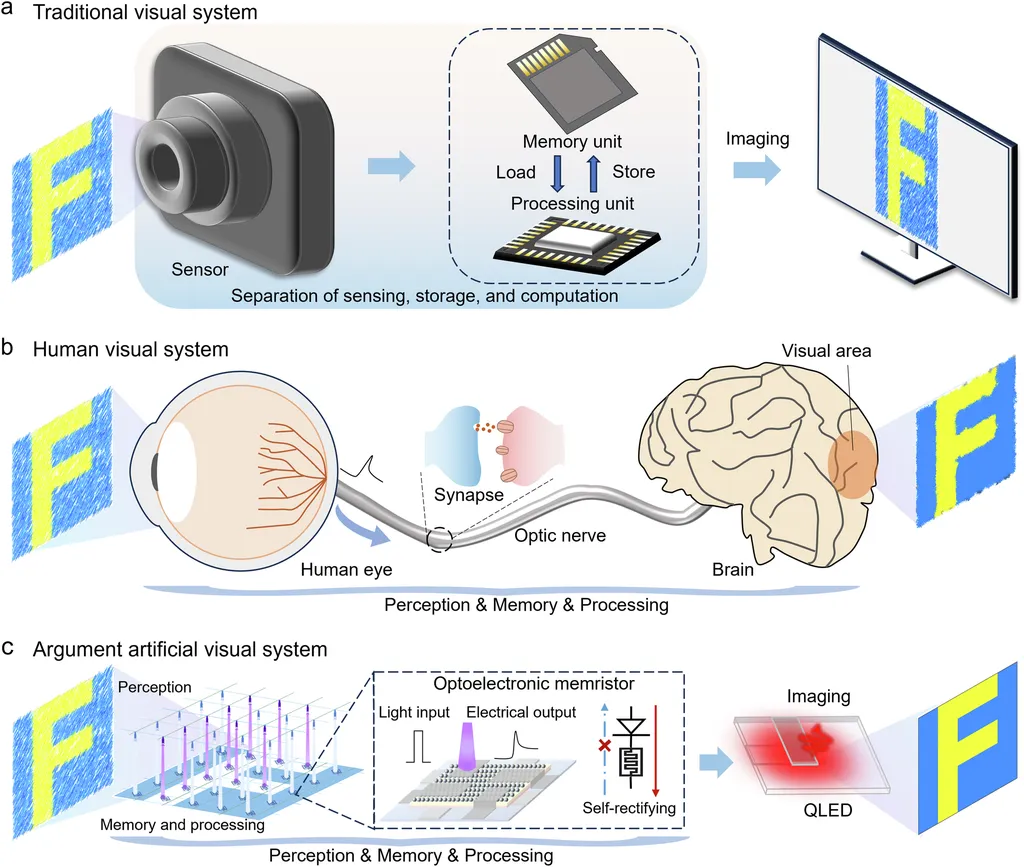In a groundbreaking development that could revolutionize the way machines perceive and adapt to their environments, researchers have created alcohol-sensitive optoelectronic synapses using molybdenum disulfide (MoS2). This innovation, led by Xiao Liu from the College of Materials Science and Engineering at Hunan University in China, opens new avenues for creating smart artificial vision systems that mimic human-like behaviors, particularly in response to alcohol.
The study, published in *InfoMat* (translated from Chinese as “Information Materials”), demonstrates that these MoS2 optoelectronic synapses can exhibit tunable visual adaptation abilities under varying alcohol concentrations. This breakthrough could have significant implications for industries relying on advanced vision systems, including autonomous vehicles and humanoid robotics.
“Our research unveils two working mechanisms involving hydrogen-atom and oxygen-atom doping during the concentration-dependent doping process,” explained Liu. This discovery not only enhances the understanding of how alcohol affects visual perception but also paves the way for developing devices that can emulate human-like behaviors, such as slight drunkenness, heavy drunkenness, and sobering up.
The visual adaptation abilities of these devices were systematically explored by controlling the doping concentration of alcohol molecules. Remarkably, the accuracy of handwritten digit recognition for this device increased from 78.9% to 94.7% under the influence of alcohol molecules and the modulation of device operating voltage. This level of precision could be a game-changer for applications requiring high accuracy in visual recognition.
The potential commercial impacts for the energy sector are substantial. For instance, autonomous vehicles equipped with these advanced vision systems could navigate more safely and efficiently, reducing the risk of accidents. Similarly, humanoid robots could perform tasks with greater adaptability and precision, enhancing their utility in various industrial and domestic settings.
“This research not only advances our understanding of optoelectronic synapses but also sets the stage for future developments in creating more intuitive and responsive artificial vision systems,” Liu added. The ability to mimic human-like visual adaptation could lead to more intuitive interactions between machines and their environments, ultimately driving innovation across multiple industries.
As the field of optoelectronics continues to evolve, this study highlights the importance of exploring novel materials and mechanisms to enhance the capabilities of artificial vision systems. The findings published in *InfoMat* provide a solid foundation for future research and development, offering a glimpse into a future where machines can perceive and adapt to their surroundings with unprecedented accuracy and efficiency.

